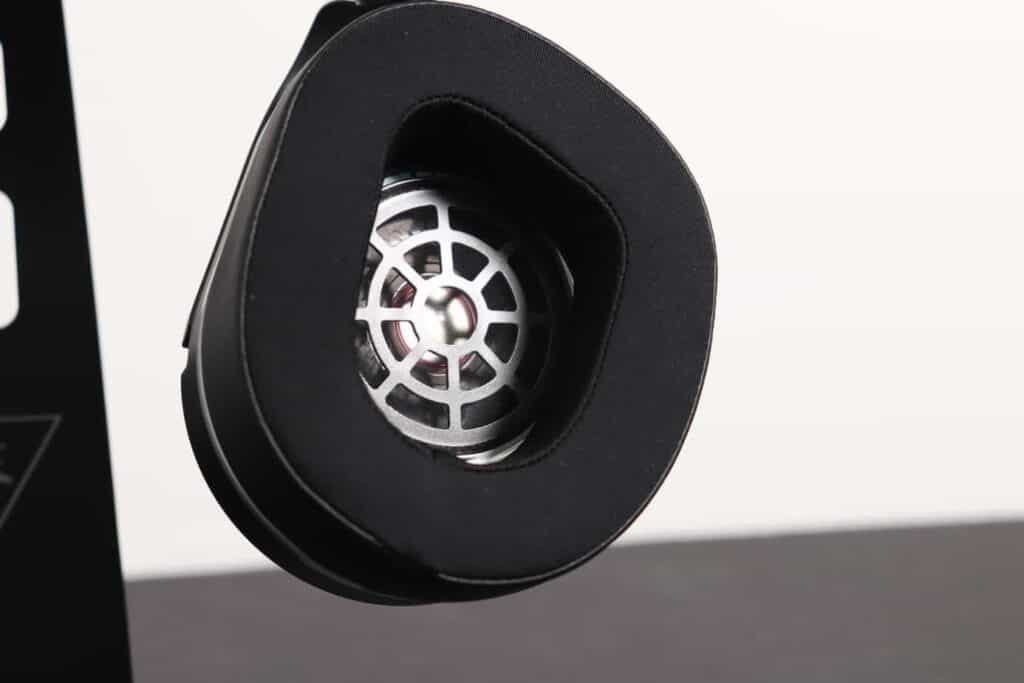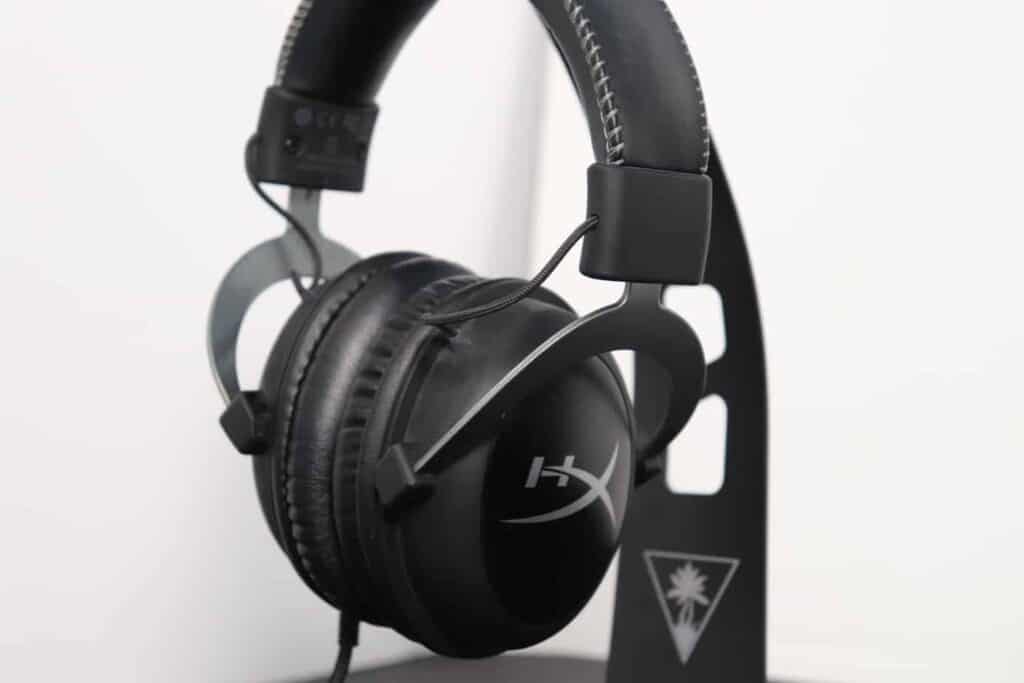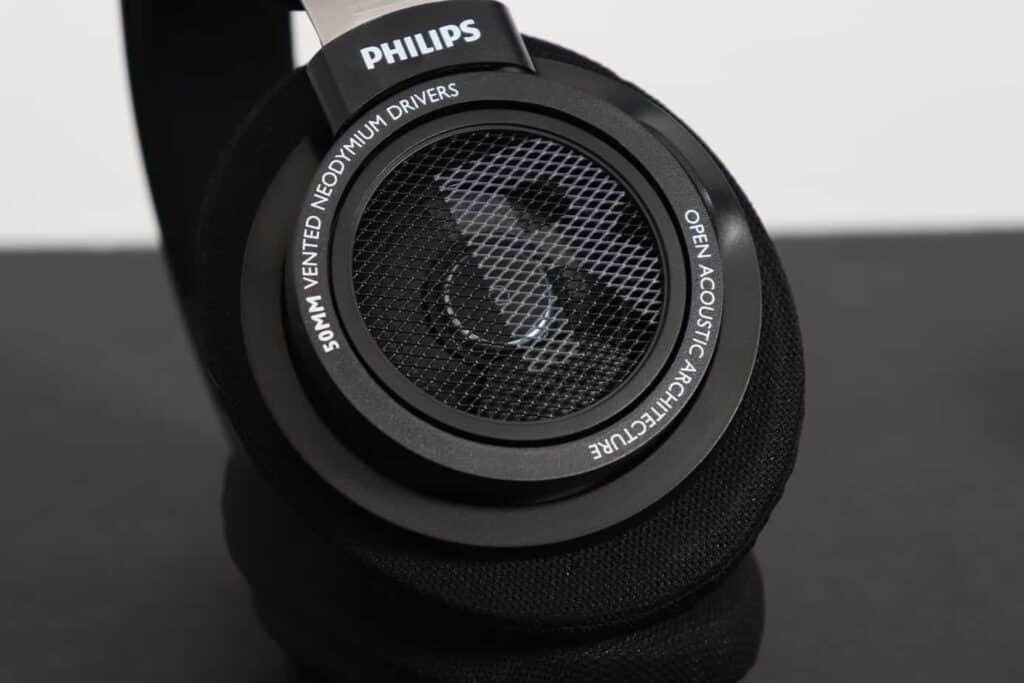When looking at headphones, you’ll start to notice that there are many different sizes of drivers on the specification sheets. What do these different sizes mean, and is bigger always better?
A bigger driver does not mean that the sound quality will be better. Bigger drivers can produce higher volumes because they move more air. The sound quality of headphones is determined by many complex factors, including build quality and how they’re tuned.
Let’s take a closer look at why bigger isn’t better and what actually does affect sound quality in headphones.
Why Headphone Driver Size Doesn’t Matter
Drivers vary in sizes, and many manufacturers like to promote the fact that their drivers are bigger than their competitors.

A larger driver will move more air inside the earcup as it produces sound waves. In essence, all this does is make the volume louder.
If bigger was better, then small tiny earphones will never sound as good as the larger cans. However, this isn’t true. There are many high-quality earphones, or IEMs (in-ear monitors), in the audiophile space.
The reason for this is because the anatomy of the human ear is quite delicate. The source of your hearing is quite small, in the form of microscopic hairs moving as sound waves come in from outside.
This means that larger sound waves won’t necessarily mean better sound. Larger sound waves, if too large, have the potential to damage your hearing.
If driver size was all that mattered, then there wouldn’t be so many different headphone experiences out there. A 53mm driver would sound better than a 40mm driver. That’s not really true 100% of the time.
Everything in a pair of headphones comes together to product the sound results that you hear.
Factors That Actually Improve Sound Quality
When purchasing a pair of headphones, it isn’t enough to just look at the driver size, impedance, and other specifications on the back of the box or on the product page. You do need to test them to see whether you like them. But some of these factors can help you decide if they’re worth trying or not.
Enclosure Design

The enclosure of a headset refers to the material that makes up the earcups as well as the material of the padding used.
The sound quality will vary depending on whether you choose open-back vs closed-back headphones.
Closed-back headphones are generally better at isolating sound within the earcups and prevents others around you from hearing what you’re listening to. The sounds from closed-back headphones sounds as if you’re imaging the music, and it occurs inside your head.
Open-back headphones are known to have a better soundstage because the sound can escape through the back of the drivers as well. You can hear the ambient sounds around you and the music appears to be produced from outside of your headset. However, this can annoy people around you.
Manufacturing Materials
The materials that are used to build the drivers can vary from cheaper and fragile to more expensive and sturdy.
High-quality, sturdy materials that won’t break under load will produce better sound. The reason is because the materials themselves are not bending.
Bending will produce sound distortion and relay inaccurate sound waves to your ears. If you like to listen to music at high-volumes, then investing in better materials will make your experience better.
High volumes can cause cheaper materials to break and essentially “blow them out.”
Tuning
Tuning refers to the sound signature that the designers were trying to achieve. It can vary from neutral to aggressively bassy, better for sound monitoring, vocals, etc.
Tuning a pair of headphones occurs after everything is has already been taken care of: the ear cushions, back design, and more.
They carefully adjust the drivers to sound their best within the given design.
This is why changing the pads on a pair of headphones can completely ruin the way that it sounds. They weren’t tuned, or designed, to be used with them.
A Closer Look at Headphone Drivers
What are headphone drivers?
The driver is the part inside a pair of headphones that produces the sound. Essentially, they’re mini-speakers that are built into earphones or headphones that make sound waves by converting the electrical signals into actual audible sound waves.
The Different Driver Types
There are many different driver types. They change the way that sound waves are produced. The materials used as well as the cost and sounds achieved vary between different driver types. Trying out different types can help you figure out your preferences, or at least get closer to the right headphones for you.
1. Dynamic (Moving Coil Driver)

Dynamic drivers are the most common and quite affordable as well. Dynamic drivers are the drivers that are found in all gaming headsets, Audio-Techanica headphones, and Sennheiser headphones.
These moving coil drivers make sounds via taking advantage of magnetic fields. The magnet (a common magnet used is neodymium) creates a magnetic field that doesn’t move.
So how does the sound get to you? The voice coil moves and oscillates away and towards the magnetic field. This produces vibrations that are carried toward your ears, thus producing sound.
Dynamic drivers are the best at producing good bass responses because they’re very good at moving around a large amount of air.
They also do not need a bunch of power to reach a higher level of volume. This is great because you won’t need to buy a separate amplifier to hear them.
However, the downside to this is that because of the amount of air moved, distortion is common, especially at higher volumes.
That doesn’t mean these are bad. With the right tuning, materials, and enclosure design, dynamic drivers can sound really good.
2. Electrostatic Drivers
Electrostatic headphones can be quite expensive. They are in rare and bulky open-back headphones.
These drivers produce sound waves through taking advantage of static electricity.
The static electricity is used to make an electric field, which creates vibrations. The vibrations force the diaphragm to oscillate between the conductive plates, because these plates are negatively and positively charged. This oscillation pushes air through the perforated headphones and makes sound waves.
The change in sounds is produced by changing the electric signals.
Electrostatic headphones are extremely complex. Because of this, they require the use of specialized amplifiers, also known as energizers.
Because of their complexities, electrostatic drivers produce some of the best sounds in the audiophile space, sounding extremely life-like.
However, they do have their downsides. They’re expensive, hard to find, bulky, and require an amplifier. These headphones may be worth looking at after being in the audiophile-enthusiast space for a little bit.
Alongside that, their aesthetic may not be what you’re looking for.
3. Planar Magnetic
Planar magnetic drivers are similar to dynamic drivers in the way that they both use magnets and take advantage of magnetic fields.
In planar magnetic drivers, there are no voice coils. Instead, the magnetic field vibrates the diaphragm to produce audible sound waves.
Because of this, the magnetic themselves must be large enough to move the entire diaphragm. In some planar magnetic headphones, there may even be more than one magnet.
Larger or more magnets mean more room is need to house them, meaning these headphones can get quite bulky. Alongside this, usually an amplifier is required to get the volume to a good level.
Planar magnetic headphones tend to be more expensive than dynamic drivers but less expensive than electrostatic headphones.
Some benefits to headphones that utilize planar magnetic drivers include having a better response with less distortion even with loud bass responses.
Planar magnetic drivers are typically housed in bulky open-back over-ear headphones.
Conclusion
The perfect headphone driver size won’t depend on the size at all. In fact, it’s better to look at the headphone as a whole rather than a combination of its specifications.
The best way to decide whether you’ll like a pair of headphones is to try them out yourself.
If that’s not an option, then listen and read to other peoples’ reviews on each particular headset. Perhaps their preferences may align with some of yours, and that will help.
Instead of looking just at driver size, look at the descriptions. What products were used to make them? What sound signature?
Alongside this, you can consider comfort and design too.
